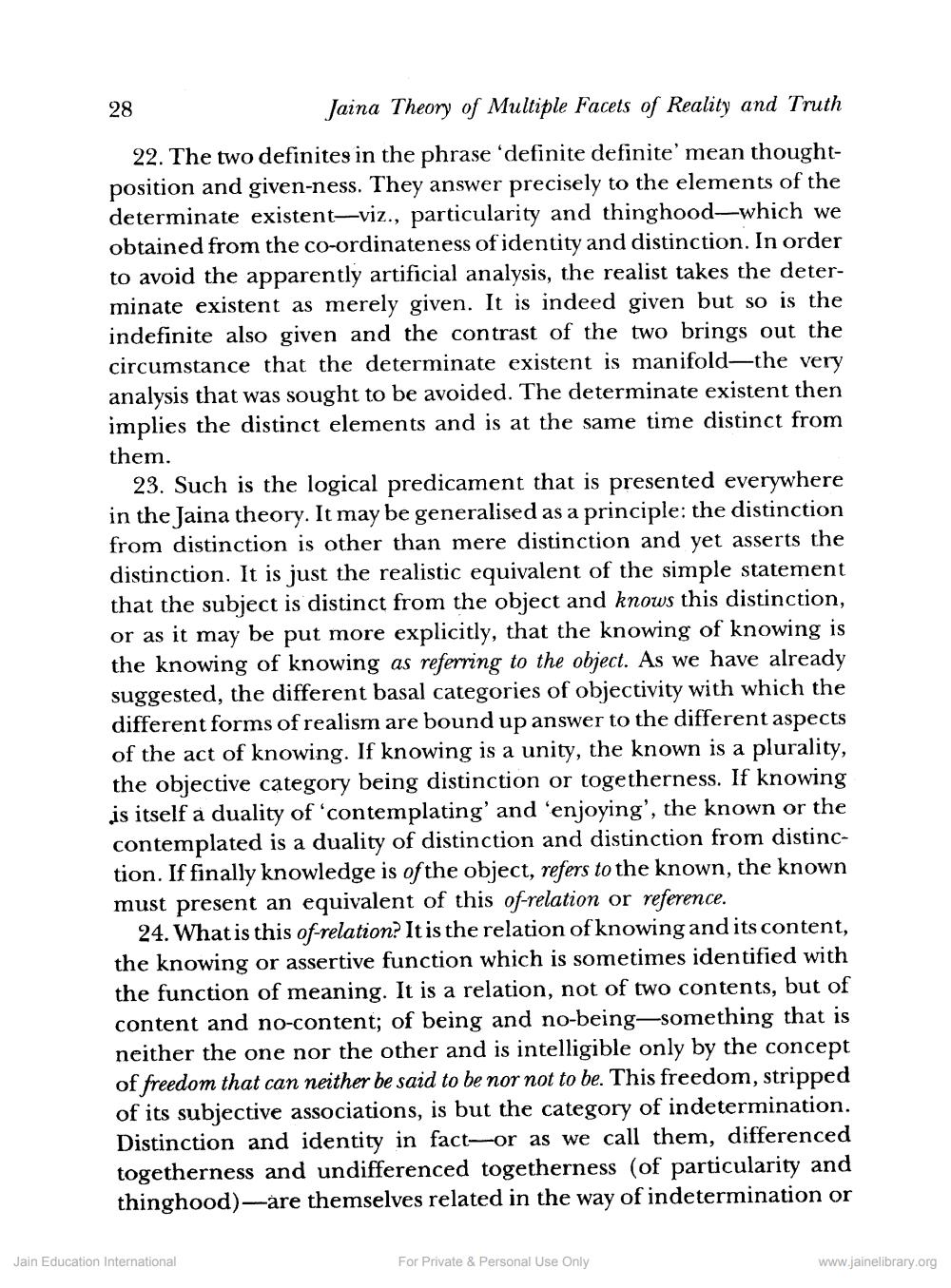________________
28
Jaina Theory of Multiple Facets of Reality and Truth
22. The two definites in the phrase 'definite definite' mean thoughtposition and given-ness. They answer precisely to the elements of the determinate existent—viz., particularity and thinghood—which we obtained from the co-ordinateness of identity and distinction. In order to avoid the apparently artificial analysis, the realist takes the determinate existent as merely given. It is indeed given but so is the indefinite also given and the contrast of the two brings out the circumstance that the determinate existent is manifold—the very analysis that was sought to be avoided. The determinate existent then implies the distinct elements and is at the same time distinct from them.
23. Such is the logical predicament that is presented everywhere in the Jaina theory. It may be generalised as a principle: the distinction from distinction is other than mere distinction and yet asserts the distinction. It is just the realistic equivalent of the simple statement that the subject is distinct from the object and knows this distinction, or as it may be put more explicitly, that the knowing of knowing is the knowing of knowing as referring to the object. As we have already suggested, the different basal categories of objectivity with which the different forms of realism are bound up answer to the different aspects of the act of knowing. If knowing is a unity, the known is a plurality, the objective category being distinction or togetherness. If knowing is itself a duality of contemplating' and 'enjoying', the known or the contemplated is a duality of distinction and distinction from distinction. If finally knowledge is of the object, refers to the known, the known must present an equivalent of this of-relation or reference.
24. What is this of-relation? It is the relation of knowing and its content, the knowing or assertive function which is sometimes identified with the function of meaning. It is a relation, not of two contents, but of content and no-content; of being and no-being-something that is neither the one nor the other and is intelligible only by the concept of freedom that can neither be said to be nor not to be. This freedom, stripped of its subjective associations, is but the category of indetermination. Distinction and identity in factor as we call them, differenced togetherness and undifferenced togetherness (of particularity and thinghood)—are themselves related in the way of indetermination or
Jain Education International
For Private & Personal Use Only
www.jainelibrary.org




